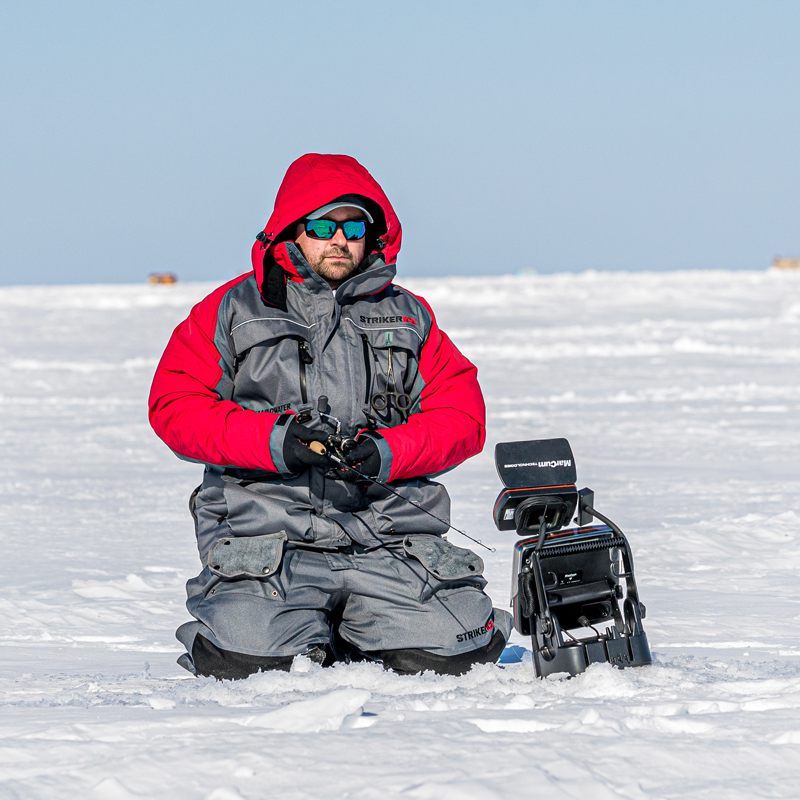Sonar Plus Camera – Ice’s Dealiest 1 – 2 Punch

It could be the most common question found on internet forums, Facebook groups, and among the freshman class of ice’s newest anglers – “Sonar or camera?” Sounds like a simple question. Multiple choice even. The answer has always been straight-forward too, with most experienced anglers leaning towards a sonar first, then purchasing a camera to eventually fill in the knowledge gaps as needed depending upon their species of interest.
Yet, in many respects the game has changed, and perhaps the answer to that old question should too. Let’s first take a look at the sonar landscape. For years, anglers had few choices regarding sonar, and most were in the $500 price range save a few budget options. Now, a dizzying array of digital and a flasher style sonar units run the gamut from a few hundred dollars, to nearly a grand. As feature sets have become more rich, so has the spend, tempting new anglers to join in at higher price points to “buy-up” in technology so as not to get left-behind sooner than later.
Meanwhile, mapping has become a critical portion of an angler’s fishing needs, supported through on-phone apps and also sonar/gps combos alike. Depending on your preference, it can be nice to have everything on one unit, yet, ice electronics these days are all about customizing feature sets to serve the species you fish for, in the depths you most frequently target, to get the most bang for your buck. In that light, a $700 flasher as an answer to the question “Sonar or camera?” – may not be the best solution, especially for panfish anglers.

As sonar technology has pushed ahead, cameras too have benefitted from better sensors, smaller screens, and lighter, sleeker form-factors. Just as with any consumer electronics, advancements that were 5 years ago top-of-the-line, are now available in budget-friendly options. As equipment evolves, so too does our angling, meaning the way we did it years ago has likely changed for the better.
All of which begs the question, regarding sonar vs. cameras, as to why you wouldn’t do both for even money? Cameras have always played 2nd fiddle to sonar, and that’s likely because you’ve always been able to monitor the whole water column with sonar. However, for a shallow-water angler pursuing panfish, sometimes trading a 9-degree cone angle for a 90 degree view of underwater real-estate yields more information. Rather than interpreting signals, you’re learning on the fly with your own eyes.
While one or the other may get you most of the way, a sonar plus a camera could be the deadliest 1-2 punch on ice. These days, there’s few reasons to settle for one or the other when solid options exist at price points to support both. While it’s well understood what would be missed without a flasher, there’s still some misconceptions about the idea of cameras being more toy than tool, more for fun than function.

Tournament anglers have long known the benefit of cameras, from identifying cover and structure like the greenest weeds of the bunch, to sorting through smaller schools of fish to find the right one, there’s a major advantage to seeing on screen a live image of what you’re looking at. Rather than targeting a bottom-hugging school of suckers for hours, quick confirmation of the fact that they’re not walleyes helps anglers move on. Not to mention, when the bite is ultra-tough, there’s nothing like a camera to learn new ways to fool old fish – like laying the bait on bottom and watching them eat. There’s really no substitute on the toughest days with the most finicky of fish.
There’s nothing like an underwater camera to make you a better angler as well. Key concepts such as lure-spin, crappies looking up to eat, and gills double-clutching baits, all learned or better understood with underwater viewing. If you want to get better at fishing any bait in your box, fish it in front of an underwater camera first. Then pair the jigging motions you see on-screen to the signals moving on your flasher. You’ll learn very quickly how to translate the perfect jigging stroke from camera to flasher, then replicate it when the best sonar marks come through.
There’s plenty of times when a camera is used before a flasher too, especially when staking out a long sit in a wheelhouse or portable for the day. If you’re setting up for an entire weekend, a camera can verify you’re at the exact spot on the spot. From hanging one end of the house up shallow and the other off-break, to positioning on a gravel edge just off of boulders. Nothing is better at confirming exacting locations for difficult fish.








